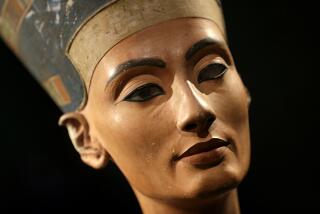Story of Joaquin Murrieta
- Share via
* The various manifestations of Joaquin Murrieta demonstrate the malleability and popular appeal of the legend (“The Many Myths of Murrieta,” May 4). The story of this “touchstone of ethnic identity” was shaped largely by a Cherokee journalist who advocated assimilation into the Anglo cultural mainstream. John Rollin Ridge, also known as Yellow Bird, was just a boy when his grandfather helped negotiate the treaty that led to the Trail of Tears. Ridge may have had this betrayal in mind when he created the motivation for Murrieta’s revenge in the form of a “company of unprincipled Americans” who drive him from his land “with no other excuse than that he was ‘an infernal Mexican intruder!’ ”
Murrieta leaves Mexico because he is “disgusted with the conduct of his degenerate countrymen” and comes to California seeking gold and “fired with enthusiastic admiration of the American character.” His criminal career ends in tragedy rather than triumph, a warning to Anglo Americans against the dangerous consequence of injustice to individuals who want to become Americans themselves. Rather than an icon of ethnic identity, Murrieta is more accurately a paragon of the assimilationist ideal. Perhaps the complexity of the mixed ideological heritage of the Murrieta figure helps explain his wide appeal--as well as the popularity of Zorro among Anglo Americans.
MICHAEL HOUSEHOLDER
Irvine
More to Read
Sign up for The Wild
We’ll help you find the best places to hike, bike and run, as well as the perfect silent spots for meditation and yoga.
You may occasionally receive promotional content from the Los Angeles Times.






